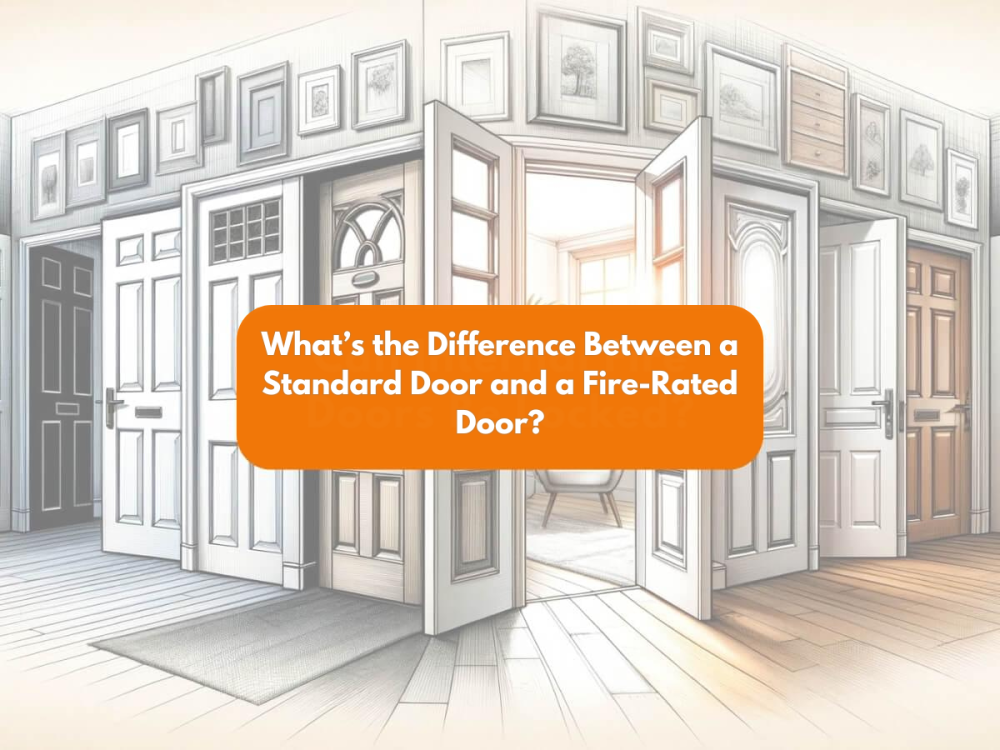A Glimpse into the 1930s: Timeless Internal Doors
Summary Table: Key Takeaways from the Article
| Key Points | Description |
| Era Significance | 1930s internal doors blend traditional and modern styles, offering timeless appeal. |
| Material Choices | Oak, walnut, and Douglas fir are commonly used, known for durability and elegance. |
| Types of Doors | Panelled, glazed, and French doors are popular styles from the 1930s. |
| Authenticity Tips | Look for craftsmanship, material quality, and possibly a maker's mark to identify authentic 1930s doors. |
| Buying Options | Antique shops, salvage yards, and online platforms like Internal Doors offer a range of choices. |
| Installation Steps | Measure, trim, sand, attach hinges, level, secure, and install hardware for a perfect fit. |
| Maintenance Tips | Regular cleaning and the use of specific oils or waxes can prolong the door's lifespan. |
| Cost Factor | Authentic doors are pricier, but replicas offer a budget-friendly option without compromising on style. |
The 1930s was a decade that left an indelible mark on various aspects of life, including architecture and interior design. This era was characterised by a blend of traditional and modern styles, creating timeless pieces that have stood the test of time. One such element that has continued to capture the imagination of homeowners and designers alike is the 1930s internal door. This article aims to delve deep into the world of 1930s internal doors, exploring their history, features, and why they remain a popular choice today. Whether you're renovating a period home or simply love the vintage aesthetic, this guide will provide you with all the information you need.
The Essence of the 1930s in Internal Doors
This pie chart depicts the percentage of 1930s internal doors made from oak, walnut, and Douglas fir, illustrating oak's dominating presence in the material choices of the era.
The 1930s internal doors are more than just a gateway from one room to another; they are a statement of style and a testament to craftsmanship. These doors often feature intricate designs, including but not limited to, panels, mouldings, and sometimes even stained glass. The materials used in these doors are also noteworthy. Oak, walnut, and Douglas fir were the predominant materials, chosen for their durability and resistance to decay. These materials not only provided a robust structure but also added a touch of elegance and warmth to the interiors.
Table: Comparison of 1930s Internal Doors with Modern Styles
| Feature | 1930s Internal Doors | Modern Internal Doors |
| Material | Oak, Walnut, Douglas Fir | MDF, Plywood, Glass |
| Design | Panelled, sometimes with stained glass | Minimalistic, often with metal accents |
| Functionality | More focus on aesthetics and durability | Focus on space-saving and light penetration |
The table above provides a quick comparison between 1930s internal doors and their modern counterparts. As you can see, while modern doors offer practicality, the 1930s doors bring an unparalleled level of sophistication and durability.
Why 1930s Internal Doors Are Still Popular
This horizontal bar graph reveals the most popular types of 1930s internal doors, with panelled doors leading the way in terms of public preference.
The 1930s internal doors have a timeless appeal that transcends trends. Their intricate designs and high-quality materials make them a versatile choice, fitting seamlessly into various home styles, from vintage to contemporary. The doors serve as a focal point, adding character and depth to any space. Moreover, the craftsmanship involved in creating these doors ensures they are long-lasting, making them a wise investment for any homeowner. Whether you're looking to capture the essence of the 1930s in a period home or incorporate a vintage touch in a modern setting, these doors are an excellent choice.
Types of 1930s Internal Doors
The 1930s era offered a plethora of internal door styles, each with its unique charm and functionality. Among the most popular types are panelled doors, which often feature two to Four panels arranged in various configurations. Glazed doors, another popular choice, come with glass panels that allow light to penetrate through, creating a bright and airy atmosphere. French doors, usually used for entrances to gardens or patios, are another hallmark of the 1930s, known for their elegance and functionality.
List: Top 5 Types of 1930s Internal Doors
- Panelled Doors: Characterised by multiple wooden panels.
- Glazed Doors: Feature glass panels for light penetration.
- French Doors: Double doors usually leading to outdoor spaces.
- Solid Oak Doors: Known for their durability and rich texture.
- Walnut Doors: Darker in colour, adding a touch of sophistication.
How to Identify Authentic 1930s Internal Doors
Identifying an authentic 1930s internal door can be a rewarding experience. Look for craftsmanship details like intricate mouldings, panel configurations, and the type of wood used. Authentic doors from this era often have a heavier feel due to the quality of wood like oak or walnut. Hardware such as knobs and hinges may also be indicative of the period. If you're lucky, you might even find a maker's mark or stamp, further confirming the door's authenticity.
Where to Buy 1930s Internal Doors
Finding authentic or replica 1930s internal doors is easier than you might think. Antique shops and salvage yards are excellent places to start your search. Online platforms also offer a wide range of options, including our own selection of 1930s internal doors. When buying online, make sure to read customer reviews and perhaps consult with an expert to ensure you're getting an authentic piece.
Table: Pros and Cons of Buying Online vs In-Store
| Buying Method | Pros | Cons |
| Online | Convenience, Wider Selection | Cannot Inspect Physically |
| In-Store | Physical Inspection, Expert Advice | Limited Selection, May Be More Expensive |
How to Install 1930s Internal Doors
Setting up a 1930s internal door in your home demands meticulous attention to detail. Here's a step-by-step guide to help you through the process:
- Measure the Door Frame: The first step is to take accurate measurements of the door frame to ensure the door will fit seamlessly. Use a tape measure for this and jot down the dimensions.
- Trim the Door: Based on your measurements, you might need to trim the door for an exact fit. Utilise a circular saw for cutting, but exercise caution to avoid splintering the wood.
- Sand the Edges: After trimming, sand down the edges to eliminate any rough spots. This ensures a smooth finish and prepares the door for painting or staining.
- Attach the Hinges: Position the door hinges on the door and align them with the corresponding spots on the frame. Mark the screw holes for precise drilling.
- Check for Level: Before securing the door, place a level on top to confirm it's perfectly horizontal. This step is crucial for the door to function correctly.
- Secure the Door: Once you're satisfied with the alignment, secure the door to the frame using screws. Make sure the screws are tightly fastened to avoid any wobbling.
- Install Door Handle and Hardware: The final step involves attaching the door handle and any other hardware like locks or latches. Make sure these are aligned correctly for smooth operation.
For more in-depth guidance, you can visit our how-to section on door installation.
How to Maintain 1930s Internal Doors
Maintaining a 1930s internal door is crucial for its longevity. Regular dusting and cleaning with a mild detergent are essential. For wooden doors, consider using specific oils or waxes to maintain the wood's lustre. If the door has glass panels, use a glass cleaner to keep them sparkling. Over time, you may need to refinish the door to restore its original beauty. Sanding and applying a fresh coat of paint or varnish can do wonders.
List: Maintenance Products to Use
- Wood Cleaner: For regular cleaning
- Oils and Waxes: To maintain the wood's finish
- Glass Cleaner: For glazed doors
- Sandpaper: For refinishing tasks
- Paint or Varnish: To refresh the door's appearance
The Cost Factor
This horizontal bar graph reveals the most popular types of 1930s internal doors, with panelled doors leading the way in terms of public preference.
Investing in a 1930s internal door can range from moderately priced to expensive, depending on the material and craftsmanship. Authentic antique doors will naturally cost more due to their rarity and historical value. However, replicas offer a more budget-friendly option without compromising on style. Maintenance costs are generally low, especially if you opt for high-quality door finishes.
Conclusion
In this comprehensive guide, we've explored the enduring allure of 1930s internal doors, from their historical significance to their modern-day applications. These doors are not just functional elements but pieces of art that add character and sophistication to any home. If you're inspired to bring a touch of the 1930s into your home, explore our range of 1930s internal doors and door furniture to find the perfect fit for your space.
FAQs for the Article on 1930s Internal Doors
1. What was the interior design style of the 1930s?
The 1930s interior design was marked by unique colour combinations, often featuring mixes of orange, gold, and blue. Geometrical shapes and monochrome styles were also prevalent.
2. What design era dominated the 1930s?
The Art Deco style, sometimes referred to as French Arts Decoratifs, was the dominant design era of the 1930s. It originated in France before gaining popularity in Europe and the USA.
3. What were the popular trends in the 1930s interior design?
Sleek lines and rounded curves were the defining trends of the 1930s in both interior design and fashion. The era was characterized by simplicity and efficiency.
4. How do you restore a 1930s door?
Restoring a 1930s door involves refinishing the wood, replacing or restoring hardware, and possibly updating the glass panels. It's essential to maintain the door's original features to keep its historical integrity.
5. What are the common sizes for 1930s internal doors?
1930s internal doors come in various sizes, including 78 X 27(inch), 78 X 30(inch), 78 X 33(inch), and 80 X 32(inch). These sizes are some of the most popular and can fit most standard door frames.














